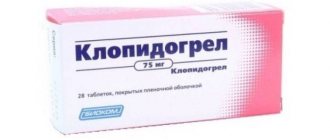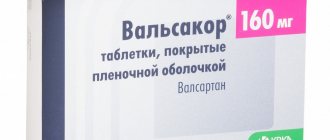Often, for serious infectious diseases, patients are prescribed broad-spectrum antibiotics. Such medications have to be used mainly intramuscularly - not the most pleasant procedure and quite painful.
This method of administration allows the drug to quickly enter the patient’s blood and tissues and immediately act on the microorganisms that cause the disease. In addition, intramuscular administration ensures the safety of the drug itself from the effects of destructive gastrointestinal environments.
But not all patients manage to tolerate this procedure favorably. Who loves being given injections? There are few such people.
Therefore, a drug with an antibiotic was developed that can be taken orally (orally) without losing its medicinal properties. In addition, it begins its effect on pathogenic microorganisms within 15 minutes after taking the tablet. This drug is called Roxithromycin. Instructions for use, analogues, reviews, price, release form of the medicine are described in the article.
Antibiotic
Roxithromycin is the name of an antibiotic that has been specifically designed to be effective when taken orally. It belongs to the class of macrolides.
This antibiotic is contained in many drugs, including the same name “Roxithromycin”.
The peculiarity of roxithromycin is that it is able to withstand the acidic environment of the digestive tract and at the same time act on different types of pathogenic microorganisms. Due to this property, roxithromycin is often used for diseases of the gastrointestinal tract: gastritis, ulcers, etc.
Preparations containing the antibiotic roxithromycin begin to act within 15 minutes after taking the tablet.
Usually, it is preferable to take antibiotics intramuscularly, in order to avoid the loss of their medicinal properties when passing through the gastrointestinal tract and for their speedy action on pathogens. But roxithromycin retains its qualities even in the acidic environment of the stomach, quickly penetrates the blood and plasma of the body, spreads throughout the body and destroys pathogens. Not many antibiotics are able to penetrate the plasma and have such an effective therapeutic effect.
Instructions:
Clinical and pharmacological group
06.020 (Macrolide antibiotic)
pharmachologic effect
Semi-synthetic antibiotic of the macrolide group. The mechanism of action is due to a violation of intracellular protein synthesis of microorganisms. At low concentrations it has a bacteriostatic effect, at high concentrations it has a bactericidal effect.
Active against gram-positive bacteria: Streptococcus pneumoniae, Streptococcus pyogenes, methicillin-sensitive strains of Staphylococcus aureus; for gram-negative bacteria: Moraxella catarrhalis.
Roxithromycin is also active against Mycoplasma pneumoniae, Ureaplasma urealyticum, Chlamydia spp.
The activity of roxithromycin against Haemophilus influenzae is less pronounced than that of erythromycin.
Inactive against Mycoplasma hominis.
Pseudomonas spp., Enterobacter spp., Acinetobacter spp. are resistant to roxithromycin.
Pharmacokinetics
After oral administration, it is quickly absorbed from the gastrointestinal tract. Determined in blood serum after 15 minutes. More stable in the acidic environment of the stomach than other macrolides. Eating does not affect absorption. Cmax in blood plasma is achieved after 1.5-2 hours. Css in blood plasma when taking 150 mg 2 times a day is achieved after 2-4 days and is 9.3 mg/l, when taking 300 mg 1 time/day - 10.9 mg/l.
Roxithromycin penetrates well into tissues, especially into the lungs, tonsils and prostate, as well as into neutrophils and monocytes, stimulating their phagocytic activity. Plasma protein binding is 96%, decreasing with increasing concentration of roxithromycin above 4 mg/l. Less than 0.05% of the dose taken is excreted in breast milk.
Partially metabolized in the liver, more than half of the active substance is excreted unchanged in the feces, about 12% is excreted by the kidneys and about 15% by the lungs. T1/2 in adults with normal renal function is 10.5 hours with a dosage frequency of 1-2 times a day.
Dosage
Orally for adults - 150 mg 2 times a day (every 12 hours) or 300 mg 1 time a day 15 minutes before meals or on an empty stomach.
For patients with liver failure, the dose is 150 mg every 24 hours.
For patients with severe renal impairment, the recommended dose is 150 mg every 24 hours.
For children, the daily dose is 5-8 mg/kg, depending on the type of pathogen and the severity of the infectious process, divided into 2 doses.
Drug interactions
When used simultaneously with indirect anticoagulants, the anticoagulant effect may be enhanced.
When used simultaneously with ergot preparations and ergotamine-like vasoconstrictors, the development of ergotism up to necrosis of limb tissue is possible.
When used simultaneously with digoxin, the absorption of digoxin increases.
With simultaneous use, a slight increase in the concentrations of midazolam and triazolam in the blood plasma is possible.
When used simultaneously with theophylline, it is possible to increase the concentration of theophylline in the blood plasma.
We cannot exclude the possibility of increased plasma concentrations of cisapride, astemizole, terfenadine when used simultaneously with roxithromycin.
When used simultaneously with cyclosporine, a slight increase in blood concentration and toxic effect of cyclosporine is possible.
When used simultaneously with ethambutol, synergism is observed against Mycobacterium avium.
Use during pregnancy and lactation
Adequate and strictly controlled studies on the safety of roxithromycin during pregnancy and lactation have not been conducted.
Roxithromycin is excreted in small quantities into breast milk.
Experimental studies on animals did not reveal mutagenic or embryotoxic effects or negative effects on fertility.
Side effects
From the digestive system: nausea, vomiting, epigastric pain, diarrhea, anorexia, flatulence, transient increase in the level of liver transaminases and alkaline phosphatase in the blood (more often in patients over 65 years of age); rarely - liver dysfunction, cholestatic hepatitis, pancreatitis.
Allergic reactions: urticaria, rash, itching, angioedema, bronchospasm, anaphylactoid reactions, swelling of the tongue, general edema, erythema multiforme, exfoliative dermatitis, Stevens-Johnson syndrome.
From the central nervous system and peripheral nervous system: headache, dizziness, paresthesia.
Effects caused by chemotherapy: rarely - candidiasis.
Other: rarely - general malaise, tinnitus, disturbances of taste and/or smell.
Indications
Infectious and inflammatory diseases caused by microorganisms sensitive to roxithromycin, incl. infections of the upper and lower respiratory tract, infections of the skin and soft tissues, non-gonococcal urethritis.
Contraindications
Severe liver dysfunction, simultaneous use of ergot alkaloids with a vasoconstrictor effect, increased sensitivity to roxithromycin and other macrolides (including erythromycin).
special instructions
Use with caution in patients with impaired liver and kidney function.
If superinfection or pseudomembranous colitis develops, roxithromycin should be immediately discontinued and appropriate therapy should be prescribed.
Use with caution simultaneously with terfenadine and astemizole.
Experimental studies did not reveal carcinogenic effects.
Medicines containing ROXITHROMYCIN
• RULICIN tab., coated. film-coated, 150 mg: 10 pcs. • ROKSOLIT tab., coated. coated, 150 mg: 10 pcs. • ROXYLOR tab., coated. film-coated, 100 mg: 10 pcs. • ROXIHEXAL® tab., coated. coated, 150 mg: 10 or 20 pcs. • ROXYLOR tab., coated. film-coated, 50 mg: 10 pcs. • ROXITHROMYCIN DS tab. 150 mg: 10 or 20 pcs. • RULID® (RULID) tab., coated. coated, 100 mg: 10 pcs. • RULID® tab., coated. coated, 150 mg: 10 pcs. • ELROX (ELROX) tab., coated. film-coated, 300 mg: 10, 20, 30, 40, 50, 60, 100 or 120 pcs. • ELROX (ELROX) tab., coated. film-coated, 150 mg: 10, 20 or 30 pcs. • ROXITHROMYCIN tablets, coated. coated, 50 mg: 10 pcs. • ROVENAL tab., coated. coated, 300 mg: 7 pcs. • ROXYBEL tab., coated. coated, 150 mg: 10 pcs. • ROMIK (ROMYK) tab., coated. coated, 150 mg: 10 or 20 pcs. • ROXITHROMYCIN LEK tab., coated. film-coated, 150 mg: 10 pcs. • ROXITHROMYCIN caps. 300 mg: 10 pcs. • RULID® tab. dispersible for children 50 mg: 10 pcs. • ROXIHEXAL® tab., coated. coated, 50 mg: 10 or 20 pcs. • ROXITHROMYCIN LEK tab., coated. film-coated, 300 mg: 7 pcs. • ROXITHROMYCIN caps. 150 mg: 10 pcs. • ROXITHROMYCIN tablets, coated. coated, 100 mg: 10 pcs. • ROXEPTIN tab., coated. coated, 150 mg: 10 or 50 pcs. • REMORA tab., cover. coated, 150 mg: 10 pcs. • ROXITHROMYCIN tablets, coated. coated, 150 mg: 10 pcs. • ROVENAL tab., coated. coated, 150 mg: 10 or 14 pcs. • ROVENAL tab., coated. coated, 100 mg: 10 pcs. • ROXYLOR tab., coated. film-coated, 300 mg: 10 pcs. • ROXYLOR tab., coated. film-coated, 150 mg: 10 pcs. • ELROX (ELROX) tab., coated. film-coated, 50 mg: 10, 20 or 30 pcs. • ROXEPTIN tab. dispersible 50 mg: 10, 20 or 50 pcs. • RULID® (RULID) tab., coated. coated, 50 mg: 10 pcs. • ELROX (ELROX) tab., coated. film-coated, 100 mg: 10, 20 or 30 pcs. • ROXIHEXAL® tab., coated. coated, 300 mg: 7, 10 or 14 pcs. • ROKSOLIT tab., coated. coated, 300 mg: 7 pcs.
The drug "Roxithromycin"
The active ingredient in this drug is roxithromycin, a semi-synthetic antibiotic.
"Roxithromycin" instructions for use are recommended for the treatment of infections affecting the respiratory tract, digestive tract, genitourinary system, skin and soft tissues.
The medicine is available in the form of tablets, both regular and dispersible.
Dispersible are quickly dissolving tablets, but not effervescent, as it might seem at first glance. They look like ordinary ones, but thanks to a special design they quickly dissolve in the mouth or in water. This quality of the tablets makes them convenient for children or people suffering from dysphagia (swallowing disorder).
The ability to dissolve the tablet in the oral cavity ensures the effectiveness of the drug in the treatment of diseases of the ENT organs: pharyngitis, tonsillitis, tonsillitis, since the medicine is absorbed immediately on the spot and begins its therapeutic effect.
Roxithromycin
Active substance:
Roxithromycin*
Pharmgroup:
Macrolides and azalides
Average price in pharmacies
| Name | Manufacturer | average price |
| Roxithromycin 0.15 n10 tablet p/film/shell /ozone/ | OZONE, LLC | 278.00 |
Analogs for the active substance:Brilid Vero-Roxithromycin RoxyHEXAL Roxide Roxylor Roximizan Roxithromycin DS Roxithromycin Lek Rulid Rulitsin Elrox Esparoxy |
Indications
"Roxithromycin", the instructions for use of which contain detailed information about the medication, is effective for many health problems.
All infectious diseases of the respiratory tract:
- pneumonia;
- sinusitis;
- tonsillitis;
- whooping cough;
- otitis media;
- bronchitis in acute form or aggravated stage;
- panbronchiolitis;
- pharyngitis;
- scarlet fever;
- bronchiectasis;
- diphtheria;
- bacterial infections in chronic obstructive pulmonary disease.
Infectious diseases of the genitourinary system:
- vaginitis;
- urethritis;
- cervicitis;
- genital infections (with the exception of gonorrhea);
- endometritis;
- chronic prostatitis.
Infectious diseases of soft tissues and skin:
- pyoderma;
- phlegmon;
- erysipelas;
- folliculitis;
- boils;
- impetigo.
Digestive diseases:
- acute gastroenterocolitis;
- duodenal ulcer;
- chronic gastritis.
In addition to the above, the drug is effective for acne, odontogenic infections, periodontitis, periostitis, chronic osteomyelitis, trachoma, erythema migrans, and brucellosis.
The instructions for use also recommend “Roxithromycin” as a prophylactic agent: in contact with patients with meningitis, to prevent bacteremia after dental procedures in patients with endocarditis. In addition, taking Roxithromycin helps prevent rheumatic fever.
Which is better: Roxithromycin or Azithromycin
Azithromycin.
Photo: myslide.ru Both drugs belong to the same pharmacological group – macrolides. They are not analogues. The active ingredient of Roxithromycin is Roxithromycin. Release form: film-coated tablets. The antibiotic Azithromycin is produced in the form of film-coated tablets, capsules, powder for preparing a suspension for oral administration, and lyophilisate for preparing a solution for infusion. The active ingredient is Azithromycin. The drug is indicated from 6 months. Roxithromycin - from 12 years. Azithromycin is prescribed for the following diseases:
- infections of the upper respiratory tract and ENT organs (tonsillitis, sinusitis, tonsillitis, pharyngitis, otitis media);
- infections of the lower respiratory tract (acute bronchitis, exacerbation of chronic bronchitis, pneumonia, including those caused by atypical pathogens);
- infections of the skin and soft tissues (acne vulgaris of moderate severity, erysipelas, impetigo, secondary infected dermatoses);
- uncomplicated urinary tract infections caused by Chlamydia trachomatis (urethritis and/or cervicitis);
- the initial stage of Lyme disease (borreliosis) is erythema migrans.
Both drugs are available with a doctor's prescription.
Roxithromycin is more expensive than Azithromycin. The price for a package of the antibiotic Azithromycin is from 46 rubles.
Contraindications
Before using any drug, you should carefully study the instructions included with it. This is especially true for broad-spectrum antibiotics, which often have a large list of side effects and contraindications. You should not take the drug without a doctor's prescription.
In the first days of taking the medicine, it is necessary to carefully monitor the patient’s condition so as not to miss the manifestation of any symptoms of overdose or intolerance to the drug.
Contraindications for the use of Roxithromycin include:
- intolerance to the antibiotic roxithromycin and other macrolides;
- combined use with drugs such as ergotamine and dihydroergotamine;
- age up to 2 months;
- pregnancy and breastfeeding.
In case of an overdose of the drug "Roxithromycin", the victim should rinse the stomach and consult a doctor who will prescribe symptomatic treatment.
Drug interactions
The medication in question is not prescribed with drugs that contain dihydroergotamine or ergotamine, as this can cause arterial spasm.
It is not recommended to take Roxithromycin with Terfenadine due to an increased risk of complications from the cardiovascular system.
When taking this drug simultaneously with Digoxin, its absorption may increase, which will lead to the development of glycoside intoxication.
The combination of Cyclosporine or Theophylline with Roxithromycin can cause an increase in the plasma concentration of the latter.
Side effect
Roxithromycin (tablets) rarely causes any side effects.
In isolated cases, the following symptoms were noted: flatulence, vomiting, loss of appetite, nausea, changes in sense of smell and taste, diarrhea, abdominal pain. Even less commonly, increased body temperature, an allergic reaction, dizziness, headaches, and candidiasis of the vagina and oral cavity may occur.
If any negative symptoms appear, you should stop using the drug and consult a doctor.
People over 60 years of age should take Roxithromycin with caution. This is due to a decrease in hepatic and renal activity in older people, and the gastrointestinal tract and kidneys are the main organs through which this drug is excreted.
In case of liver failure, it is recommended to use the drug with constant monitoring of liver function.
When used simultaneously with astemizole, pimozide, terfenadine or cisapride, ECG indicators should be monitored.
Side effects
While taking the drug in question, the patient may experience the following side effects:
- nausea, abdominal pain, vomiting, diarrhea, pseudomembranous colitis, pancreatitis;
- increased activity of liver transaminases, acute hepatocellular or cholestatic hepatitis;
- paresthesia, dizziness, changes in taste, headaches, impaired sense of smell, temporary hearing loss, hallucinations, vertigo, hypoacusia;
- redness, rash, purpura;
- angioedema, bronchospasm, urticaria, eosinophilia;
- anaphylactic shock, exudative erythema multiforme;
- superinfection, candidiasis.
Roxithromycin and alcohol
Like any other drug containing an antibiotic, Roxithromycin is incompatible with any alcohol.
Why should you not drink alcohol while taking medications, including antibiotics? There are good reasons for this: ethanol affects the drug by interacting with it and can disrupt the properties of the drug. As a result, the medicine can cause poisoning, side effects and even death.
When taken together with the drug Roxithromycin, alcohol has a toxic effect on the body (poisoning), reduces the effectiveness of the drug, and causes side effects: chills, suffocation, convulsions, and a sharp decrease in blood pressure.
After completing a course of treatment with Roxithromycin, you must wait at least three days before the drug is completely eliminated from the body and only then can you drink alcoholic beverages.
"Roxithromycin": release form and application
"Roxithromycin" is available in tablets that are white and coated. There are 10 pieces in the package.
Dispersible tablets have an antibiotic dosage of 50 mg, and regular tablets are available in various dosages: 300, 150, 100 and 50 mg.
Based on the recommended daily dose of the drug, it is more convenient to buy Roxithromycin with an antibiotic content of 50 or 150 mg.
The drug should be taken 20 minutes before meals. Taking the tablet with or after a meal will be less effective, as the digestion process may interfere with the medication being fully absorbed.
Composition, description, form of the medicinal product
Roxithromycin tablets are film-coated, white in color, and round and biconvex in shape with the engraving “164”.
The active substance of this medicine is roxithromycin. In addition, the drug also contains auxiliary components such as hyprolose, povidone K30, poloxamer, magnesium stearate, colloidal silicon dioxide, corn starch and talc.
As for the film shell, it contains hypromellose, dextrose, titanium dioxide and propylene glycol.
The medicine goes on sale in blisters and cardboard packs, respectively.
Dosage
Compliance with the recommended dosage allows you to get the fastest effect from taking the drug and avoid side effects.
"Roxithromycin" for adults - 300 mg per day. The duration of the course depends on the severity of the disease and can range from 5 to 21 days - this is determined by the doctor based on the results of the examination and the patient’s test results.
Roxithromycin is prescribed to children from 5 to 8 mg per kilogram of the child’s weight per day.
If the patient has liver failure, this does not allow this medicine to be completely eliminated from the body, so such patients are prescribed half the usual dose - 150 mg per day.
Dosage of the drug for adults and children
Tablets are prescribed orally before meals. For adults and children over 12 years of age, the standard dosage is 150 mg of the drug twice a day with an interval of 13 hours or 300 mg once (for adults).
In older people, the daily and single dose of the medication does not change. For patients with renal failure, the drug is prescribed at a dose of 150 mg twice a day.
In patients with liver failure, the dosage is halved (to 150 mg once a day).
Analogs
What can replace the drug "Roxithromycin"? Its analogues contain the same active ingredient – roxithromycin (antibiotic).
The difference between these drugs from each other lies in the amount of roxithromycin they contain and the composition of the excipients.
Analogues of the drug "Roxromycin" (the dosage of the antibiotic is indicated in parentheses):
- "Rulid" (300, 150, 100, 50 mg);
- "Esparoxy" (150 mg);
- "Roxithromycin Lek" (300, 150 mg);
- "RoxyHEXAL" (300, 150, 50 mg);
- "Roxithromycin Sandoz" (300, 150, 50 mg);
- "Brilid" (150 mg);
- "Rulitsin" (150 mg);
- "Roxide" (300, 150 mg);
- "Vero-Roxithromycin" (150 mg);
- "Roxithromycin DS" (150 mg);
- "Xytrocin" (150 mg);
- "Elrox" (150 mg);
- "Roxilor" (300, 150, 100, 50 mg);
- "Roximizan" (150 mg).
All of the above drugs “Roxithromycin” analogues have the same indications and contraindications as the drug discussed in this article, with the exception that the patient may be intolerant to the excipients in any of these medications.
Drug analogues
The most popular analogue of Roxithromycin is Erythromycin. The instructions state that this drug is also an antibiotic.
So which of these remedies is better? Compared to Erythromycin, Roxithromycin has more improved pharmacokinetic properties. After oral administration, it is quite quickly absorbed from the gastrointestinal tract.
Having a more developed bioavailability, which is slightly dependent on food consumption, this medication is detected in the blood after ¼ hour.
It should also be said that the drug “Roxithromycin” forms more noticeable and reliable concentrations not only in human fluids and tissues, but also in blood serum.
Thus, we can safely say that the first drug is slightly worse than the second. "Erythromycin", the instructions for which are also included in the cardboard box, is an outdated antibiotic.
In addition to the drug mentioned, the drug “Roxithromycin” can be replaced with such drugs as “Brilid”, “Esparoxy”, “Vero-Roxithromycin”, “Elrox”, “Xitrocin”, “Rusbrikar”, “Remora”, “Rulitsin”, “ Roxeptin", "Rulid", "RoxiHEXAL", "Romik", "Roxide", "Roxolit", "Roxilor", "Roxithromycin DS", "Roximizan".
Reviews
People who have taken the drug "Roxithromycin" leave the following reviews about it:
- using the medicine internally eliminates the need for intramuscular injections, which is very convenient;
- the drug acts quickly, and its therapeutic effect can be felt already on the second day after use;
- “Roxithromycin” helps to quickly and permanently get rid of respiratory tract diseases: bronchitis, laryngitis, pneumonia, etc.;
- the fact that the drug penetrates the blood plasma makes it an even more effective medicine than other antibiotics;
- dispersible tablets are a convenient form of taking the drug for children;
- "Roxithromycin" (reviews confirm this) has a relatively small list of side effects and contraindications than other drugs containing antibiotics;
- after completing a course of treatment with Roxithromycin, the infection goes away quickly and for a long time;
- the low cost of the drug "Roxithromycin" makes it accessible to patients;
- the drug is quickly absorbed and acts throughout the body.
Pharmacokinetics of the drug
Where is the drug Roxithromycin absorbed? Reviews from experts report that after oral administration, the medication is absorbed from the gastrointestinal tract.
The tablets are stable in the acidic environment of the stomach. Food consumed ¼ hour after the medication does not have any effect on its absorption.
After taking the drug, its maximum concentration is reached after one and a half to two hours.
Using the medication at intervals of 13 hours ensures that the required concentrations of the drug in the blood are maintained throughout the day.
Plasma protein binding is 95.5%. In this case, the drug penetrates into the lungs, prostate gland and tonsils. It is also found in cells (macrophages) and various body fluids.
"Roxithromycin", the price of which is indicated below, practically does not penetrate the blood-brain barrier and is excreted in breast milk only in small quantities. Despite this, taking this medication during such periods is prohibited.
The drug is partially metabolized in the liver. Its largest part (about 50%) is excreted unchanged by the intestines, as well as through the kidneys (about 12%) and lungs (about 15%).
The half-life of the active substance after a single dose is approximately 13 hours.
Poor liver function increases the maximum concentration and half-life of the drug.
Price
The price for the drug "Roxithromycin" is quite reasonable - from 200 rubles (depending on the region).
Most analogues of this medicine, which include the same roxithromycin, will cost more. For example, the cost of Rulid tablets is from 1,500 rubles, Esparoxy is from 300 rubles, Roxithromycin Lek is from 400 rubles.
If there is a need to purchase a drug with the antibiotic in question, then it is more profitable to buy Roxithromycin; it will have no less effective effect than similar drugs and will significantly save money.
Thus, “Roxithromycin” (the price of the drug confirms this) is the most affordable drug among its analogues.




